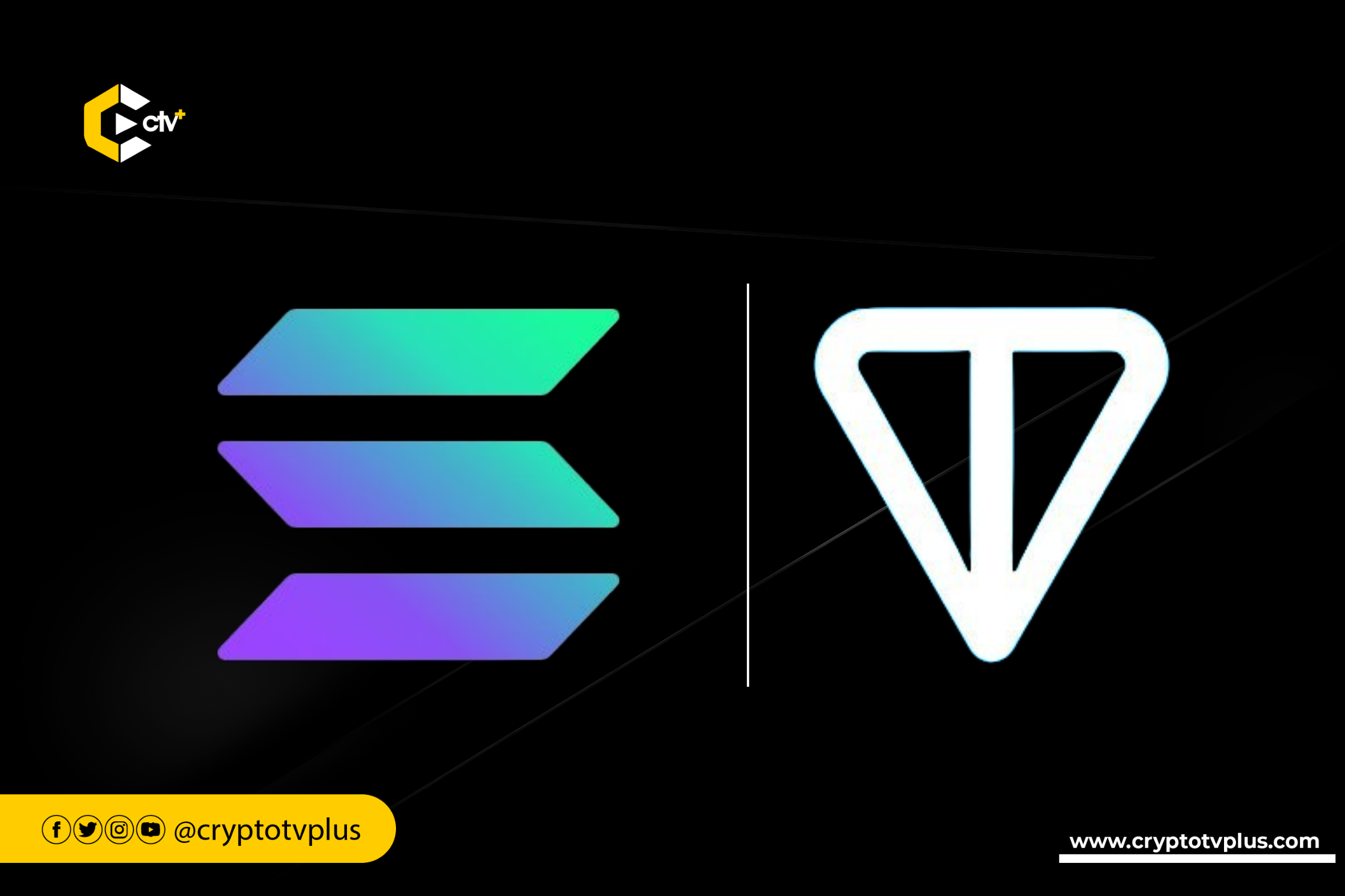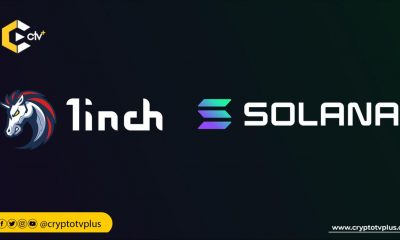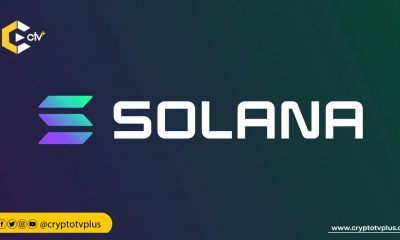News
Solana versus TON blockchain: what you should know

By 2024, Solana and TON (The Open Network) have skyrocketed to prominence in the blockchain world, hitting record-high market caps since their mainnet debuts. Solana has notably become a breeding ground for top-tier memecoins starting late 2023.
Conversely, TON has been the go-to platform for popular crypto “tapping” projects, famed for their swift user adoption rates. For example, the Notcoin project amassed over a million users in under a month, while Hamster Kombat achieved a historic milestone with the fastest-growing YouTube channel to date, surpassing 20 million subscribers in a mere month.
This article delves into these two blockchains’ unique traits and features, providing a comparative analysis.
Transaction per second (TPS)
Transaction Per Second is the number of transactions a blockchain can handle per second. While several speculations indicate Solana processes up to 65,000 transactions per second, data from its explorer reveals that it is a little over 3,000 TPS and has processed almost 300 billion transactions.
Part of this can be attributed to its longevity since the blockchain was launched in 2017 and has undergone several adjustments.
TON blockchain on the other hand has a TPS that averages 100 and a total transaction that exceeds 600 million. A huge part of these transactions occurred between March 1 and June, corresponding to deploying several games on the blockchain with Notcoin leading the way.
While Solana’s block time is 0.4 seconds, TON’s block time is 5 seconds. Block time is the duration it takes to validate a transaction.
Consensus Algorithm
A consensus algorithm is a process used to achieve agreement on a single data value among distributed processes or systems. It is a crucial component in decentralized computer networks which ensures that all nodes in the network agree on the state of the system, even in the presence of failures or outages.
Solana’s consensus algorithm is a hybrid proof-of-stake (PoS) and proof-of-history (PoH) mechanism that combines the efficiency of PoH with the security of PoS. This consensus algorithm is designed to achieve high scalability and speed while maintaining decentralization and security.
Proof of History (PoH) is a consensus mechanism used in blockchain networks to establish a verifiable passage of time without relying on a centralized time source.
In the PoS consensus mechanism, validators are chosen based on their stake in the network, to validate transactions, and run the network. In return, they are rewarded with in the form of SOL tokens.
On Solana, the leader generates a PoH sequence, which is a chronological order of events or transactions initiated on Solana. Validators then verify the PoH sequence, create checkpoints, and reach consensus on the order of transactions based on the PoH sequence. The leader creates a block based on the consensus, which validators then verify and add to the blockchain.
Additionally, Solana uses SHA-256, a 256-bit secure hash algorithm, in its Proof of History (PoH) mechanism. This is used to create a rhythmic clock that measures the creation of blocks with the exact time when they were made. The SHA-256 hash algorithm is used to encode the passage of time.
TON uses a variant of the Proof-of-Stake (PoS) consensus mechanism called Byzantine Fault Tolerant Proof-of-Stake (BFT-PoS). This allows the network to achieve high transaction speeds and finality while maintaining security and decentralization.
On TON, validators are selected to participate in the consensus process based on the amount of cryptocurrency they have staked (i.e., locked up) on the network. The consensus process is divided into rounds, with each round having a leader selected to propose the next block.
The leader broadcasts the proposed block to all other validators, who then validate the block and vote on its validity. If at least two-thirds of the validators vote to accept the block, it is finalized and added to the blockchain.
If the leader fails to propose a valid block or less than two-thirds of validators vote to accept it, a new leader is selected, and the process repeats. BFT-PoS is designed to tolerate Byzantine faults, where some validators may behave maliciously or fail unexpectedly. This ensures that the network can continue operating even if up to one-third of the validators are faulty or adversarial.
The TON (The Open Network) blockchain utilizes the KECCAK-256 hash function, which is a variant of the SHA-3 hash algorithm. This choice of hash function is a significant design decision for the TON platform, as the hash function plays a crucial role in various security-critical operations within the blockchain.
The choice of KECCAK-256 provides a level, not complete, of compatibility with the Ethereum ecosystem, as Ethereum also uses a KECCAK-based hash function (KECCAK-256) for many of its core operations. This compatibility can be beneficial for developers and users who are familiar with the Ethereum ecosystem and may want to interact with or build applications on the TON platform.
Programming language
The primary programming languages used for developing on the Solana blockchain are Rust and C/C++. Rust is the native and most widely used programming language for developing on-chain programs, including smart contracts.
Solana was built using Rust, and the Solana team has created a robust set of libraries and tools specifically for building blockchain applications in Rust.
However, Solana also supports using Python for client-side development, though not for on-chain program development. Developers can use Python SDKs and APIs to interact with the Solana blockchain from their client applications.
Solana also has community-contributed SDKs that allow developers to use other programming languages, such as Java, Go, and JavaScript/TypeScript, for client-side development and interaction with the Solana blockchain.
FunC is the primary smart contract programming language for TON. Fift is another language that was designed specifically for TON Blockchain. Tact is a high-level language for TON smart contracts similar to TypeScript and Rust. It is developed by the community.
Sharding
Solana does not support sharding, which is a technique used to improve the scalability of blockchain networks by dividing the network into smaller, more manageable pieces called shards.
In 2019, Solana CEO Anatoly Yakovenko shared that sharding can introduce new security risks, such as the potential for a single shard to be taken over by hackers, which could trigger a domino effect and impact the overall security of the network.
However, Firedancer, an independent validator client for Solana, is designing its infrastructure to introduce sharding support on Solana. The goal is to allow the network to be divided into smaller, more manageable pieces for improved efficiency. Firedance is not yet integrated with Solana mainnet.
The TON blockchain has a feature called “dynamic sharding”. Unlike static sharding, where the number of shards is predetermined, TON’s dynamic sharding feature allows the network to automatically create new shard-chains as the load on the network increases.
This means that the TON blockchain can scale horizontally, adding more shardchains to handle the growing demand, without the need for manual intervention or network upgrades.
The TON network continuously monitors the load on the existing shard-chains and automatically creates new shard-chains when the load reaches a certain threshold. This ensures that the network can always maintain high performance and low latency, even as the number of users and transactions grows.
Tokens metrics and average transaction fee
The SOL is the native cryptocurrency of the Solana blockchain platform. It secures the blockchain through staking, where validators are chosen based on their stake in the network. SOL is also used to pay transaction fees, which range from $0.003 to $0.030 per transaction.
SOL’s market capitalization currently exceeds $60 billion, marking an increase of over 16,500% since its launch. Its peak market cap was $90.1 billion on April 1, 2024, according to Coingecko.
The all-time high (ATH) price of SOL is $259.96, while the all-time low (ATL) is $0.50. The circulating supply is 461,904,034 SOL, and the total supply is 578,470,067 SOL.
A key factor contributing to SOL’s high market cap, placing it among the top ten crypto projects over the past four years, is the substantial amount of Solana staked. According to Solscan, this amount is $374 million.
The $TON token is the native cryptocurrency of the TON blockchain platform, used for staking, voting, and transaction fees. Each transaction on the TON network costs approximately $0.0055 in TON tokens, incentivizing validators to maintain network integrity.
The total supply of $TON is 1 billion tokens, with around 500 million currently circulating. It is traded on major exchanges like Binance, Huobi, and Kraken.
The market cap has seen a 1,565% increase, reaching over $16.8 billion, with a peak of $23.3 billion on April 13, 2024. The all-time high (ATH) and all-time low (ATL) for $TON are $8.24 and $0.3906, respectively.
Token types
The Solana Program Library (SPL) defines the token standard for both fungible and non-fungible tokens on the Solana blockchain. This SPL token standard ensures that these tokens are interoperable with Solana wallets and smart contracts.
Unlike Ethereum, which has separate standards like ERC-20 and ERC-721 for different token types, the SPL token standard covers all token types on Solana. The differences in token functionality are specified at the token creation stage.
Furthermore, Solana is developing “Token-2022,” which will introduce new features to SPL tokens, such as interest-bearing logic, transfer fees, and other account-specific functions. These enhancements will expand the capabilities of the SPL token standard and foster the growth of Solana’s dynamic on-chain ecosystem.
On the TON blockchain, Jettons serve as the fungible token standard, designed to facilitate the creation and exchange of tokens within the TON ecosystem. Examples of tokens built with the Jettons standard include TONALD, named after former U.S. President Donald Trump; BOOBA, a meme-inspired token; and Burncoin.
Jettons allow users and developers to mint custom tokens that can represent a variety of assets or values. This provides a flexible tool for decentralized finance (DeFi), gaming, and other applications.
TON has also introduced TEP-64 (TON Enhancement Proposal 64), a token data standard that defines the interface for token metadata within the TON ecosystem. Authored by EmelyanenkoK and Tolya, this proposal aims to standardize the representation of token data, including Non-Fungible Tokens (NFTs) and Jettons, to enhance interoperability and user interaction across different platforms.
TEP-64 offers a flexible framework for token metadata, accommodating both on-chain and off-chain storage methods. This standard facilitates the automatic retrieval and uniform display of token information, such as names, descriptions, and images, by applications like wallets and marketplaces.
Growth dynamics
Solana was launched in March 2020, initially trading below $1. In its early years, Solana’s price remained low as the project was still establishing itself. However, in 2021, Solana began to gain significant traction and growth. By February 2021, Solana had climbed the market capitalization rankings from position 42 to rank 7 by September 2021.
This rapid rise was driven by Solana’s key technical advantages, including its high throughput of up to 65,000 transactions per second, low transaction fees, and fast confirmation times.
Solana’s growth has been fueled by its support for a wide range of decentralized applications, particularly in areas like DeFi, NFTs, gaming, and the rush for meme tokens.
On the other hand, the growth of TON can be attributed to two major factors. First, its integration with the Telegram application, which has over 900 million users today. Second, TON’s support for Mini Apps, which are lightweight applications that can be embedded directly into Telegram chats, offers an innovative way to drive user engagement and ecosystem growth.
Mini Apps enable developers to create interactive experiences within the Telegram interface, leveraging the platform’s social features and user base.
Examples of these Mini Apps include Notcoin, Tapswap, Hamster Kombat, Blum, Pixel Tap, Yescoin, and various bots created to facilitate the trading of DeFi tokens on both TON and Solana.























Pingback: Tapswap vs Hamster Kombat: what you should know | CryptoTvplus - The Leading Blockchain Media Firm